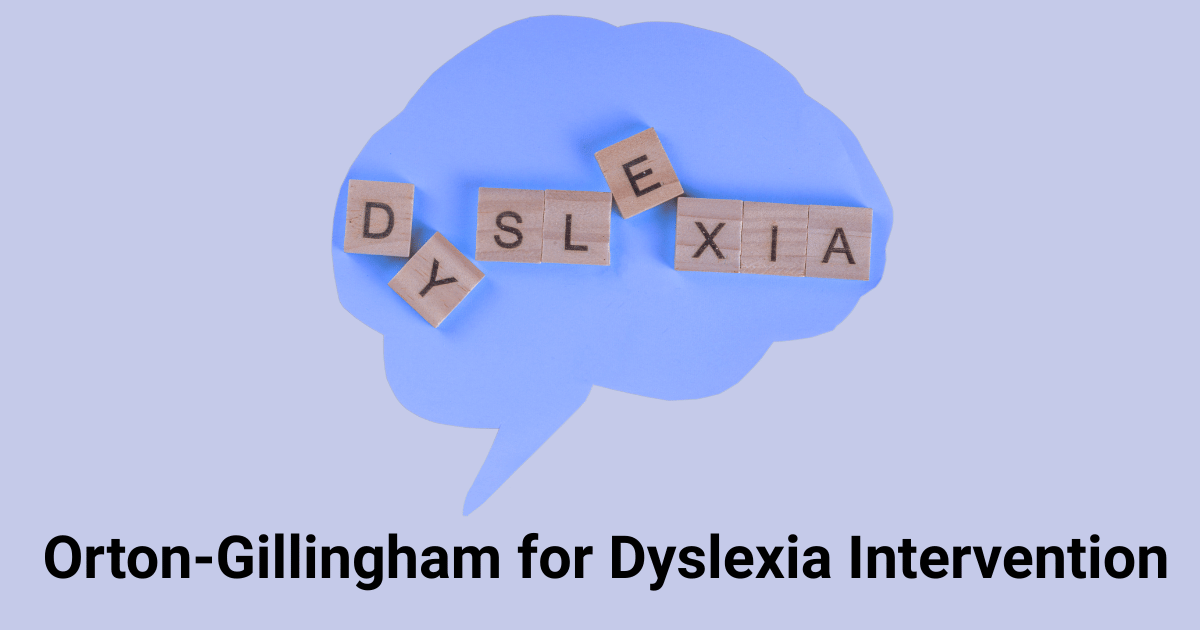Orton-Gillingham Approach: Dyslexia Intervention Guide
Discover the Orton-Gillingham approach—a proven multisensory method for teaching reading and spelling to students with dyslexia. Learn its principles, effectiveness, and classroom applications.

What Is Orton-Gillingham?
The Orton-Gillingham (OG) approach is an evidence-based, structured, multisensory method uniquely designed to help students struggling with dyslexia learn to read, write, and spell effectively.
Core Features of OG:
- Structured and sequential lessons
- Explicit phonics instruction
- Multisensory (visual, auditory, kinesthetic)
- Individualized for each learner
Brief History of Orton-Gillingham
- 1920s: Developed by neurologist Dr. Samuel T. Orton.
- 1930s: Educational psychologist Anna Gillingham collaborated with Orton, creating the first multisensory literacy manual.
- 1950s onward: Widely adopted as a foundation for modern dyslexia interventions.
Key Teaching Principles
- Multisensory Instruction
- Engages sight , sound , and touch simultaneously
- Helps strengthen memory pathways
- Structured & Sequential
- Lessons build logically from simple to complex skills
- Regular review to ensure retention
- Explicit Teaching
- Clearly explains every rule without assumptions
- Teaches reasoning behind language structures
- Diagnostic & Individualized
- Tailors instruction to each student's specific needs
- Flexible pacing until mastery is achieved
A Typical Orton-Gillingham Lesson Example
An OG lesson is structured and predictable, typically including:
- Reviewing previously learned skills
- Visual/auditory drills to reinforce phonetic skills
- Blending practice to improve decoding skills
- Explicit introduction of new concepts
- Reading practice using decodable texts
- Spelling & dictation practice
- Recap to reinforce new concepts learned
Modern Uses of Orton-Gillingham
OG in Schools
- Applied widely in Response to Intervention (RTI)
- Adapted increasingly for whole-class instruction
Online Programs
- Digital platforms deliver remote OG tutoring
- Combination of live instruction and digital practice tools
OG-Based Curricula
Many structured literacy programs (e.g., Wilson, Barton, SPIRE, Lindamood-Bell) are based on OG principles.
Trusted Resources
Conclusion: Why Orton-Gillingham Matters
Orton-Gillingham remains a cornerstone in dyslexia intervention due to its structured, multisensory, and explicit instructional methods, backed by significant teacher experience and positive learner outcomes.
Despite evolving educational approaches, OG continues to deliver powerful, individualized literacy support that transforms learning for dyslexic students.
Key References
- International Dyslexia Association (IDA) - General Resources & History
- Yale Center for Dyslexia & Creativity - Endorsements & Resources
- Stevens et al. (2021). Meta-analysis on OG effectiveness (*Exceptional Children*). [PubMed Link]
- Gillingham, A., & Stillman, B. W. (Original Manuals, e.g., *Remedial Training for Children with Specific Disability in Reading, Spelling and Penmanship*) - Historical Context